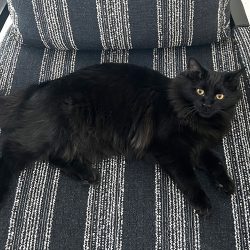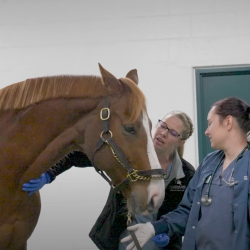By Aimee Colbath, VMD, PhD, DACVS; Frank Nickels, DVM, MS, DACVS; Jose Casillas, DVM; Lindsay Knott, DVM; Marisa Cervantes, DVM Class of 2020; Ani Sefildzhian, Ross University School of Veterinary Medicine Class of 2020
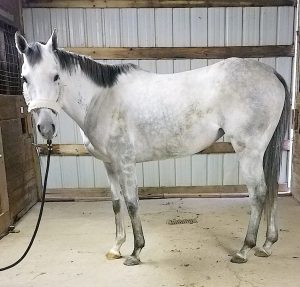
History and Presentation
“Tapit on the Run,” a three-year-old Thoroughbred filly, presented to Michigan State University’s Large Animal Surgery Service for an incomplete lateral condylar fracture on the right rear limb on Friday, October 11, 2019. She had participated in eight races, with her most recent being on Wednesday, October 2, 2019, when the fracture occurred.
On presentation, the filly was quiet, alert, and responsive. The filly appeared well hydrated and no cardiopulmonary abnormalities were appreciated. On abdominal auscultation, there was normal borborygmi in all quadrants. A right rear distal limb bandage was present, and the filly was weight bearing in the stall on the affected limb during the physical examination. The remainder of the examination was unremarkable.
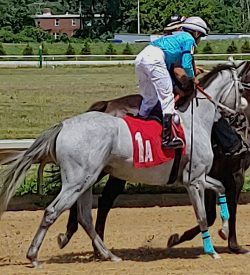
Diagnosis
Diagnostic radiographs were performed. Radiographs on initial presentation revealed a non-displaced, incomplete lateral condylar fracture of the right third metatarsal (MTIII), with articular involvement of the metatarsophalangeal joint (fetlock). At the time of surgery, radiographs were repeated and indicated a complete lateral condylar fracture of MTIII with mild displacement.
Treatment and Outcome
The filly was prepared for standing repair of the lateral condylar fracture of the right rear limb. Perioperative antibiotics (Penicillin, Gentamicin) and non-steroidal anti-inflammatory medication were administered, and the filly was heavily sedated. Regional analgesia was performed, which allowed for a standing repair. The fracture was repaired under radiographic guidance using three 4.5mm cortical screws placed in lag fashion. Screws were placed through small skin incisions in a minimally invasive manner. (Skin incisions were closed with interrupted sutures and a sterile distal limb bandage was applied.)

The filly was comfortable post-operatively and a sterile bandaging was continued. She was maintained on a non-steroidal oral anti-inflammatory (phenylbutazone) medication and was sent home with detailed dismissal information including monitoring, medication, and bandage care specifications as well as exercise restrictions and recommendations for recheck appointments.
As of “Tapit-on-the-Run’s” third recheck appointment (90 days post-op), the filly was reported to be doing well at home. On presentation, she was weight-bearing on her right limb. Recheck radiographs confirmed fracture healing with a bony callous.
“Tapit on the Run” will complete post-op rehabilitation until February of 2020. At that time, an assessment from a veterinarian will determine her future exercise potential.
Comments and About "Tapit on the Run"
Standing fracture repair and minimally invasive surgery provides multiple advantages. Placing screws through stab incisions reduces the surgical incision and decreases the chance of surgical site infection. Standing repair avoids anesthesia and anesthesia recovery, ultimately providing a safer experience for the horse and also reducing the cost for the owner.
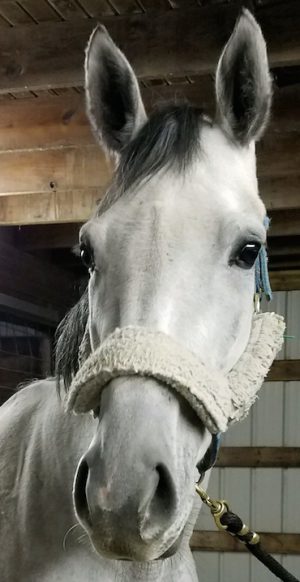
CANTER Michigan, a nonprofit organization that finds homes and careers for Thoroughbred racehorses, and the MSU Large Animal Clinic have worked together to help injured Thoroughbreds for 20 years. This relationship helps injured Thoroughbreds recover from injuries so they can be retrained for new careers and adopted into CANTER-approved homes. The students of the College also benefit from this relationship, as they assist with all aspects of surgery from diagnosis, preparation, anesthesia, recovery, and post-operation care.
“Tapit on the Run” came into the CANTER Michigan Program at the beginning of October 2019. This three-year-old gray Thoroughbred filly carries the name and coloring of her champion grandsire, Tapit. The filly completed eight races prior to the fracture of her right rear limb. She’s now retired from racing.
The MSU College of Veterinary Medicine has an Equine Rehabilitation Fund that supports full diagnostic and surgical services for horses rescued through CANTER, or similar organizations. To donate to this fund, please go here.


